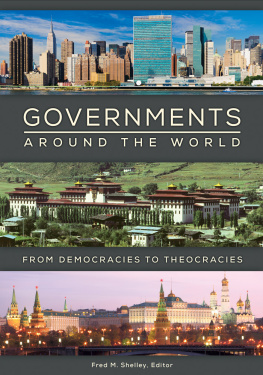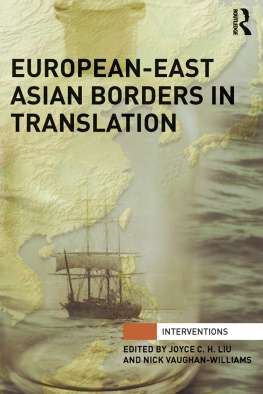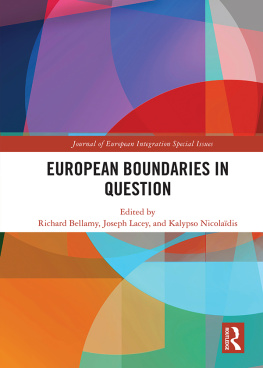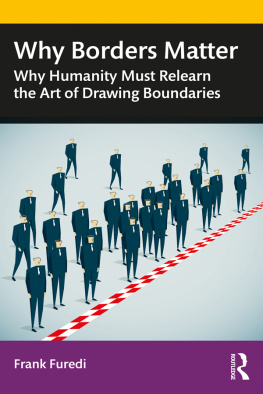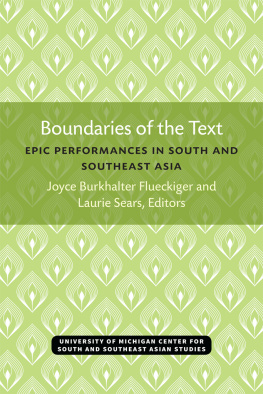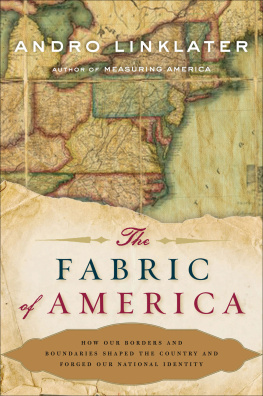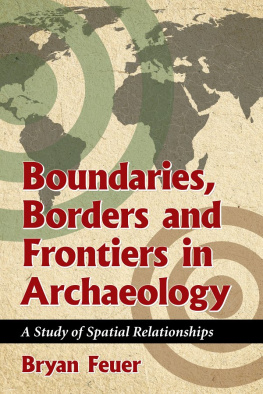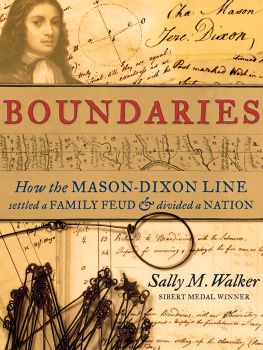NATION SHAPES
THE STORY BEHIND THE WORLDS BORDERS
Fred M. Shelley

Copyright 2013 by ABC-CLIO, LLC
All rights reserved. No part of this publication may be reproduced, stored in a retrieval system, or transmitted, in any form or by any means, electronic, mechanical, photocopying, recording, or otherwise, except for the inclusion of brief quotations in a review, without prior permission in writing from the publisher.
Library of Congress Cataloging-in-Publication Data
Shelley, Fred M., 1952
Nation shapes : the story behind the worlds borders / Fred M. Shelley.
p. cm.
Includes bibliographical references and index.
ISBN 978-1-61069-105-5 (hardcopy : alk. paper) ISBN 978-1-61069-106-2 (ebook) 1. Boundaries. 2. Political geography. I. Title.
JC323.S55 2013
320.1'2dc23 2012035416
ISBN: 978-1-61069-105-5
EISBN: 978-1-61069-106-2
17 16 15 14 13 1 2 3 4 5
This book is also available on the World Wide Web as an eBook.
Visit www.abc-clio.com for details.
ABC-CLIO, LLC
130 Cremona Drive, P.O. Box 1911
Santa Barbara, California 93116-1911
This book is printed on acid-free paper 
Manufactured in the United States of America
CONTENTS
INTRODUCTION: NATIONS, STATES, TERITORIES, AND BOUNDARIES
The world is divided into nearly 200 separate countries, each of which is separated from others by boundaries. How might the land boundaries of each country be described? Why have these boundaries evolved as they have over the course of history? And what conflicts over territory are being faced by each country? The purpose of this book is to address these questions.
NATIONS AND STATES
In describing the countries of the world and their boundaries, it is important to recognize the difference between a nation and a state. A nation is a group of people living in a particular area who share common cultural, ethnic, linguistic, or religious characteristics. A state is a political unit recognized by the international community of states. According to this definition, Americans, Swedes, Chinese, French, and Japanese are nations. The United States, Sweden, China, France, and Japan are states. Confusion arises in some cases because some countries, including the United States, Mexico, India, and Germany, consist of multiple units that are termed states. From the perspective of international political geography, however, these countries are considered states.
Throughout history, conflicts have arisen because states and nations do not match up with each other. Some nations and states are closely linked to each other. For example, most Japanese people live in Japan, and most residents of the state of Japan are Japanese nationals. However, many nations extend across several states while many individual states include multiple nations.
For example, Arabs represent the majority of people who live in several states in Southwest Asia and North Africa. There are several definitions of what constitutes the Arab nation. Three commonly used definitions include being descended from people who lived in ancient or medieval Arabia, speaking Arabic as ones first language, and being a citizen of a country that is a member of the League of Arab States. Any or all of these definitions can be used to identify a person as a member of the Arab nation. However, there is no single Arab state. There are many states, including Saudi Arabia, Egypt, Libya, and Qatar, in which a very large percentage of the population consists of Arabs.
On the other hand, many states contain multiple nations. For example, India consists of many different nations, distinguished from one another on the basis of language and culture. Conflict between members of different nations within states has occurred frequently. Many of these conflicts are associated with differences in language, religion, and other cultural characteristics. These conflicts are especially intense in cases in which a majority group attempts to impose its culture, language, or religion on minority groups. In some cases, cultures of indigenous populations are also suppressed by governments, again leading to political turmoil and conflict.
The designation of a language as an official language is often a source of controversy, particularly among persons who do not speak the official language of the state. States that have identified official languages generally require that government business and education be conducted in the official language. Knowledge of the official language is sometimes a requirement for citizenship. For example, someone who wishes to become a citizen of Estonia is required to pass a test about Estonian culture, history, and political structures in the Estonian language. About 25 percent of Estonian residents are of Russian ancestry and many of these persons cannot speak or read Estonian, therefore precluding them from obtaining Estonian citizenship.
Not only do many states contain multiple nations, but there are many nations that do not have their own states. Frequently, nationalist movements have arisen within such states. Nationalists support political independence, or at least higher levels of political autonomy, for members of minority nations within their states. Among the many nations that currently lack states and in which nationalist movements are active are Kurds in Southwest Asia, Basques in Spain and France, and Uighurs and Tibetans in China.
CITIZENSHIP AND SOVEREIGNTY
What constitutes a state? Geographers and political scientists have identified several criteria associated with recognizing a place or region as a state. In order for a state to be considered a state, it needs to meet several requirements. These include a territory, a population, an economy, a government, and a system of infrastructure including transportation, education, and communications.
The worlds states vary dramatically in terms of land area, population, history, and other characteristics. For example, San Marino in Europe has a land area of 24 square miles, or a third of the size of the District of Columbia. Its population is about 30,000. On the other hand, China has a land area of 3.7 million square miles, making it the third-largest state in the world by land area behind Russia and Canada. Its population of about 1.3 billion makes China the most populous country in the world. Some states, such as the United Kingdom, Spain, China, and Japan, have been in existence for hundreds of years. Others such as South Sudan, which became independent of Sudan in 2011, have been added to the world political map only recently. Yet all of these countries meet the criteria for states.
The fact that states must include territory and population leads to the concepts of citizenship and sovereignty. Citizenship represents the rights and responsibilities linking a person to the state. However, the definition of citizenship varies from one state to another. In the United States and many other countries, citizenship is related to the state and is unrelated to nationality. To become a naturalized American citizen, one must pass a test demonstrating knowledge of U.S. history and government. A person who does so is eligible for citizenship regardless of national origin. In other countries, national origin is an important criterion for citizenship. For example, it is difficult for someone who cannot prove that he or she has German ancestry to become a German citizen. This has been a question of considerable controversy in Germany because many residents of Germany are descended from people who moved to Germany from Turkey, the Middle East, and elsewhere 50 or more years ago. Estonia is a country that also bases citizenship on nationality. Persons who can prove that they are descended from ancestors who were Estonian citizens between 1918 and 1940, when Estonia was an independent state, are exempt from the requirement to pass a test on Estonian history and government in the Estonian language.


